Hodges#8591
Phoberia atomaris
Classification
- Phylum: Arthropoda
- Subphylum: Hexapoda
- Class: Insecta
- Order: Lepidoptera
- Superfamily: Noctuoidea
- Family: Erebidae
- Subfamily: Erebinae
- Tribe: Melipotini
- Genus: Phoberia
- Species: atomaris
Pronunciation
How to pronounce Phoberia atomaris: /foʊˈbɪəriə ætəˈmɛərɪs/
These audio files are automatically generated. While they are not always 100% accurate, they are a good starting point.
Images

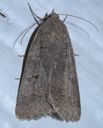
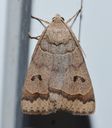
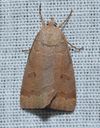
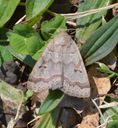
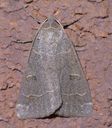
Summary
Phoberia atomaris, known as the common oak moth, is a species of moth in the family Erebidae that is found predominantly in North America. Its larvae primarily feed on oak species, and they can cause notable defoliation in spring. Identification can be aided through its mottled forewings and the behavior of the larvae.
Physical Characteristics
Wingspan about 38 mm; forewing length 17-18 mm.
Identification Tips
Forewings are finely mottled with brown, giving a striped effect; first prolegs of the larvae are slightly reduced.
Habitat
Oak forests and areas with abundant oak trees.
Distribution
Eastern half of North America, from Quebec and Ontario south to Florida, and west to Kansas and Texas.
Diet
Larvae feed on various oak species, including Northern red oak.
Life Cycle
Univoltine; adults are on wing from March to July depending on location.
Ecosystem Role
Considered a defoliator of oak trees, impacting local ecosystems.
Evolution
Specific epithet from Latin meaning 'with minute dots or points.'
Tags
- Phoberia atomaris
- common oak moth
- Erebidae
- North America
- leaf defoliator